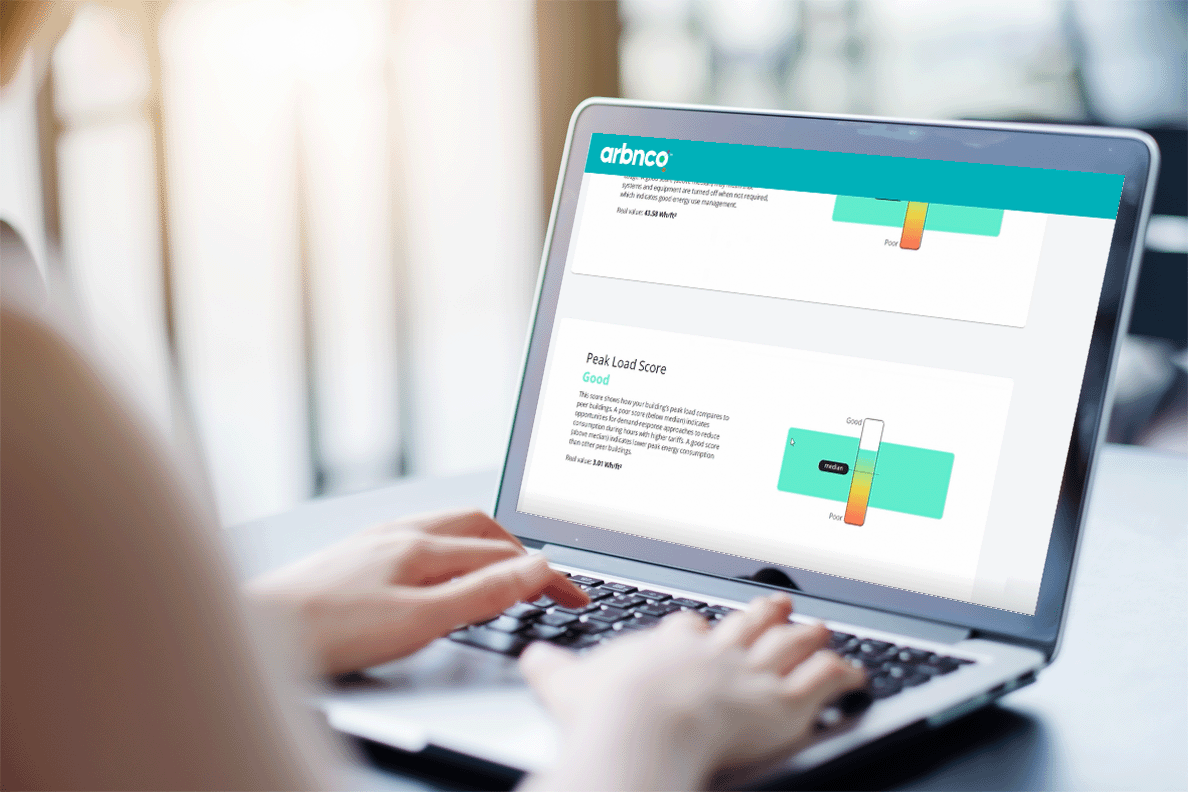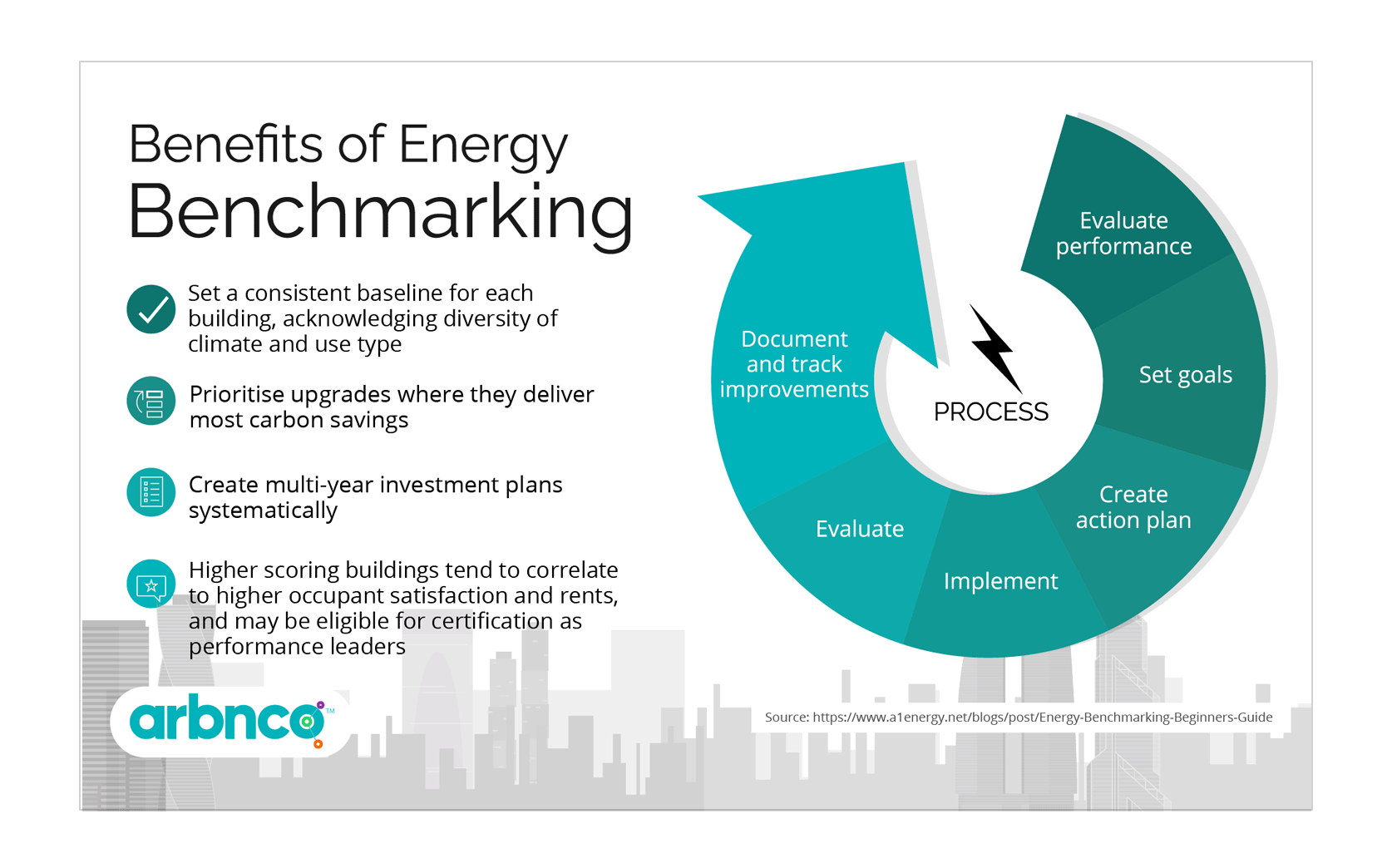Benchmarking Building Performance
by arbnco | Oct 26, 2022 | Blogs

A Global Challenge
The energy that humans use in buildings constitutes about “30% of total global final energy consumption” and created 10 Gt of direct and indirect CO2e emissions in 2021 alone1. To significantly move the needle on the energy consumption of buildings, their operation and construction must be fundamentally transformed at scale. Tackling just the operational part of this challenge, i.e., improving existing buildings, is a daunting task. There are millions of buildings around the world and only finite human, material, and financial resources to improve them. It makes sense, therefore, to start with interventions that deliver maximum aggregate benefit. In other words, if you are responsible for a group of buildings you need to be able to measure energy usage, and then rank, filter, and target buildings quickly and easily using this data. Load data, target, intervene, rinse and repeat.
What Gets Benchmarked Gets Managed
Benchmarking a performance metric for a building, in this case energy consumption, is a simple and powerful concept for targeting interventions. This “… process of measuring a building’s energy use over time … allows building owners and occupants to understand their buildings’ operational performance relative to similar buildings.”2 By judging buildings against each other using uniform criteria, we can make the process systematic and repeatable. Benchmarks come in many flavors, and it is often useful to use a variety of them to judge different aspects of a building’s performance, such as peak load, potential wastage, hours spent in good air quality, etc.
At arbnco, for example, we offer a mix of industry-standard benchmarks, such as the U.S. Environmental Protection Agency’s ENERGY STAR® index, and custom benchmarks created by our team of researchers3 to compare a building’s performance against its peers and identify opportunities for improvements. Having more than one benchmark to hand is often useful, since the utility of a benchmark, and its underlying metric, is a function of a user’s priorities. For example, utilities would want to target customers that would “benefit most from their efficiency programs”, policymakers may be mandated to address the worst-performing buildings first 4, etc.
For a benchmark to be useful, it must ideally be:
- simple and inexpensive to calculate,
- clearly connected to, and correlated with, an environmental, social, or financial outcome, e.g., high values of ENERGY STAR® indicate better operational energy performance,
- actionable, e.g., an increase in a wastage benchmark is likely due to HVAC equipment running out of hours.
Besides these key considerations, a benchmark that meets the needs of a diverse set of stakeholders is desirable, since it can be a potent communication tool between teams. If stakeholders agree on the calculation methods and inputs, a good benchmark should remove ambiguity in goal-setting and desirability of actions. Ideally, the framework used would be dynamic, i.e., updated at sufficient frequency and with little fuss and expense, allowing a diverse set of stakeholders to see the effect of actions and allow iterative improvements to individual buildings.
There Is Always A Caveat
Like any statistical analysis, a benchmark is only as good as the data that feeds it. Inaccurate data can skew priorities and lead to programs being targeted wrongly. Sometimes owners or program administrators can get trapped in a vicious cycle: buildings with poor data completeness often need the most attention, but unless data completeness is targeted as an end in itself, these buildings will not have enough data to be properly ranked and addressed. Bias can also be introduced by decisions on how inputs are weighted. ‘Garbage in, garbage out’ holds true for benchmarking methods as much as it does for engineering calculations.
Some of these can be overcome with better technological frameworks. At arbnco, for example, we ingest high-frequency meter data from utility databases directly. This data is then cleaned and contextualized using proprietary algorithms as well as additional data from public sources and third parties5.
Benchmarking to the Rescue
Benchmarking provides a transparent and systematic approach to measuring the energy use of buildings and comparing it to other, similar buildings. Additionally, benchmarking helps decision makers use actionable data to make informed decisions and prioritize opportunities to reduce energy use through energy efficiency improvements and renewables.
Benchmarks are usually the best way to make sense of a collection of buildings at once. Merely benchmarking buildings and communicating performance to the correct stakeholders can show small improvements in efficiency6. Like the voluntary certification and assessment schemes that often use it, benchmarking can offer flexibility on how desirable outcomes are achieved7. Benchmarking can help achieve an equitable transition in a resource-constrained world, enabling help to be targeted at buildings that need it most.
At arbnco, we’re here to help. To schedule a demo of our benchmarking capabilities, click here

References
- https://www.iea.org/topics/buildings, accessed 10 October 2022
- Zachary Hart, “The Benefits of Benchmarking Building Performance,” Building Performance Policy (Institute for Market Transformation, Pacific Coast Collaborative, December 2015), https://www.energy.gov/sites/prod/files/2019/02/f59/PCC_Benefits_of_Benchmarking.pdf.
- Mahnameh Taheri et al., “Benchmarking Building Energy Consumption Using Efficiency Factors,” in Proceedings of BS 2019 (16th IBPSA International Conference, Rome, Italy, 2019), 3863–70, https://doi.org/10.26868/25222708.2019.210575; Mahnameh Taheri et al., “The Efforts towards Development of an Energy Efficiency Upgrade Platform,” 2021, https://doi.org/10.26868/25222708.2021.30910.
- 4 Hart, “The Benefits of Benchmarking Building Performance.”
- Mahnameh Taheri et al., “Forecasting Building Energy Performance Using Machine Learning Methods: To What Extent Should We Trust It?,” in Proceedings of ESim 2020: 11th Conference of IBPSA-Canada, vol. 11, ESim (Vancouver, Canada: IBPSA-Canada, 2020), https://publications.ibpsa.org/conference/paper/?id=esim2020_1106.
- Hart, “The Benefits of Benchmarking Building Performance”, and references therein.
- W.L. Lee, “A Comprehensive Review of Metrics of Building Environmental Assessment Schemes,” Energy and Buildings 62 (July 2013): 403–13, https://doi.org/10.1016/j.enbuild.2013.03.014.
Written by
Parag Rastogi, Research Scientist, arbnco
